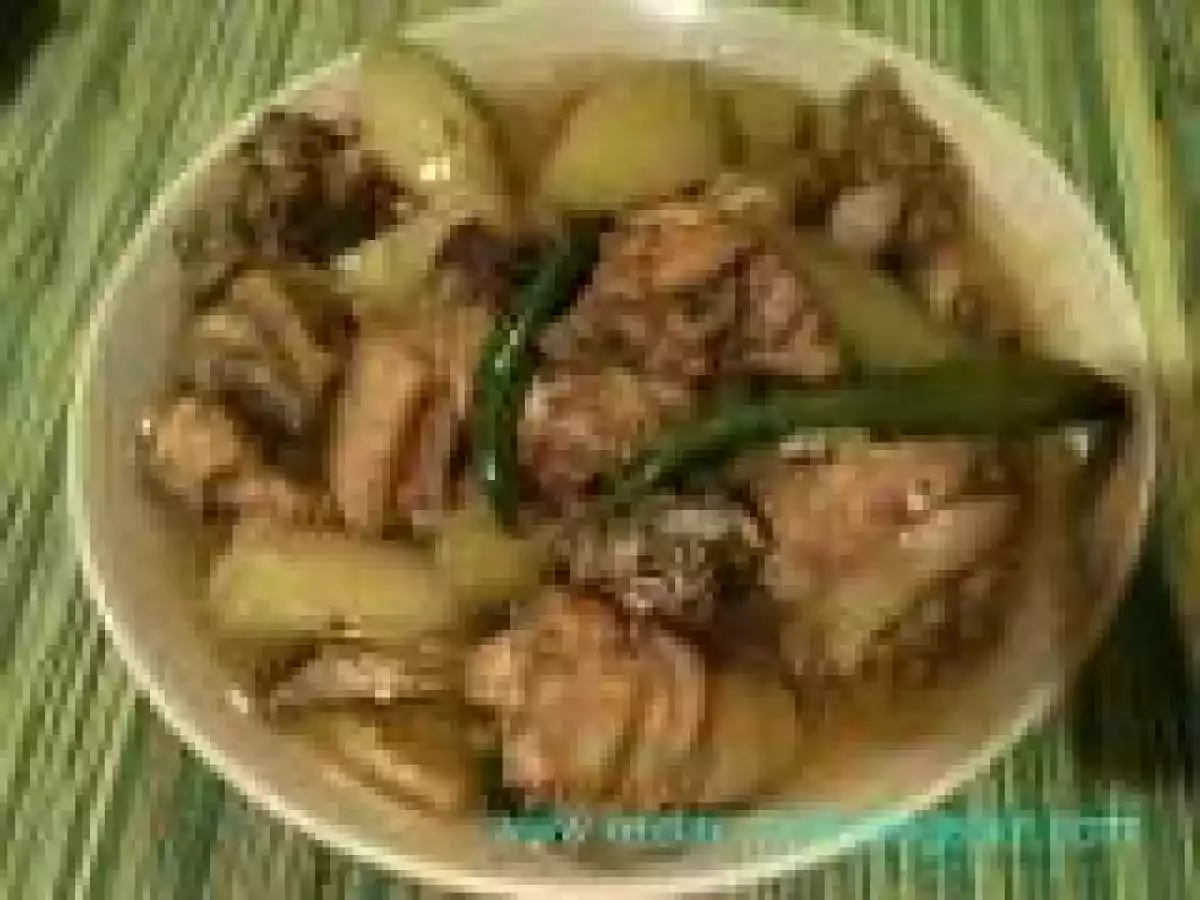There are culinary properties of chicken and coconut cream which when combined together in cookery will result to a rich, flavorful, sometimes oily, but nonetheless truly satisfying dish. This is so true in the case of ?ginataang manok? or chicken braised in coconut cream and spices. Like its close cousin ?adobong manok sa dilaw?, it is a unique Filipino table fare perfect for its staple food that is steamed rice. The tasty sauce coating the chicken in the dish is just so full of flavors that when slathered on rice and eaten together could make you forget your delayed monthly amortization??. or your pass due credit cards payments??.or your long Christmas shopping list which, sadly, remains unallocated until now.
No, no, no, these are just examples and not really my problems ??.true ??. Okay! Okay, the last one is???. but don?t tell my family, relatives and friends. It might trigger extreme panic, chaos and pandemonium. Let them buy their gifts for me first. :-)
Since this is another ?ginataan? dish (cooked in coconut milk), one important ingredient of course is ?gata? or coconut milk. As explained before in ?ginataang alimasag? post, coconut milk is a sweet, creamy, milky white cooking base extracted from the grated meat of a mature coconut. There are two grades of coconut milk namely thick and thin. The thick coconut milk, sometimes referred to as coconut cream, and called ?kakang gata? in the Philippines is the first extraction milk collected by directly squeezing grated coconut meat through cheesecloth or in between palms.
Thin coconut milk on the other hand is attained when the squeezed coconut meat is soaked in warm water and squeezed a second or third time to further extract coconut milk. This type is commonly used for general cooking purposes.
While ginger and chili are significant spice ingredients here, lemongrass, also known as barbed wire grass, silky heads, citronella grass or fever grass, carries a much greater weight. For me, it is the secret or shall we say the fundamental ingredient that will provide the distinct flavor and depth in taste. And if you will ask, what exactly is a lemongrass?
Lemongrass or ?salay or tanglad? as called in the Philippines and ?sera? here in Sri Lanka, is a tall perennial grass native to India. It is widely used as a herb in Asian cuisine. It has a citrus flavor and can be dried and powdered or used fresh. It is generally used in teas, soups, curries and among the marinade ingredients for fried or grilled meats. It is highly suitable for fish, seafood and of course, poultry ??..hence, its important role in this recipe.
I am so fond with this herb that I even planted some in our backyard for ready use anytime I need to. It is a regular ingredient in our ?tinowa? (?tinolang isda?) and ?chicken inasal? dishes as well as in many curry-recipes our Sri Lankan cook oftentimes prepare and serve for us Filipinos here.
To cook the dish, we need about 1½ kilograms or more than 3 lbs choice cut chicken legs (thighs and drumsticks), cut up to serving sizes. You can also use whole chicken cut up to serving sizes including its giblets if you so desire. Remove excess fat in the chicken and some of the skin (optional) for the dish to be less oily. But reserve the chicken skin which you can deep fry as cracklings. Wash the chicken pieces several times to remove traces of blood and then drain thoroughly. Wash the removed chicken skin as well, lightly seasoned with salt and pepper and keep in the freezer for future use.
_timestamp.JPG)
The other ingredients needed are: 6 gloves garlic, peeled and crushed, 1 large lemongrass, crushed, 1 thumb-sized ginger, peeled and thinly sliced, 1 large onion, peeled and chopped, 1 tsp peppercorn, cracked or freshly ground, 1 tsp salt or to taste, 3 tbsp white vinegar, ½ tbsp sugar or to taste, 6 pcs finger chilies, 2 chopped and 4 kept whole, and 1 large chayote, peeled and cut to serving sizes and 1 can or about 500 ml coconut milk.
You are about to find out the secret process to this recipe which was developed and unselfishly whispered to us by Ms. Lalaine of the popular ?Cuchinta? and ?Binagoongan? recipes posted in this humble website.
In a large wok or large pan or heavy bottomed casserole, heat ¼ of the coconut milk on low flame. Continue cooking with regular stirring until the coconut milk starts to curdle, releases its own oil (?naglalangis o naglalatik?) and becomes fragrant or aromatic. When the coconut oil is evident, add in garlic followed by the onion and continue frying the spices on the sizzling oil.
Add in ginger followed by the chicken and continue sautéing until the chicken renders its own liquid (and some oil). Simmer on low heat until the meat is partially cooked through. Add in chayote and continue cooking.
Add in lemongrass and the chopped chilies. When the veggies are cooked through, season it with ground pepper and salt. Lower the heat and add the remaining coconut milk and continue simmering with the lid off.
Add in vinegar and sugar. Taste and adjust the seasonings. Add in whole chilies and continue cooking until they are cooked through and liquid is reduced and a thick but somewhat oily sauce remains. As always, you can scoop out some of the oil that floats if you'll find it quite excessive. :-)
Transfer the dish in serving plates and serve with lots of steamed rice. The dish is rich, very delicious and like most ?ginataan? recipes, it complements well with steamed rice. As a reminder though, watch your intake out as it will easily surpass your diet limits. Sorry but enjoy!
c?,)

Comments